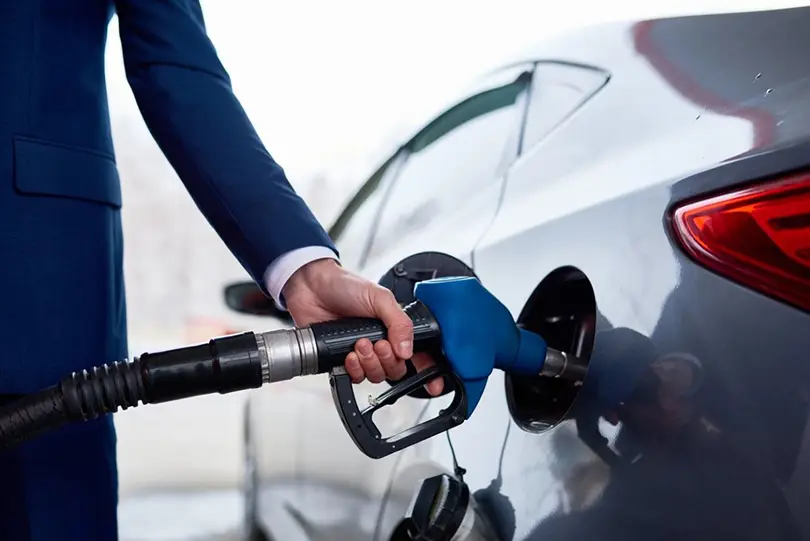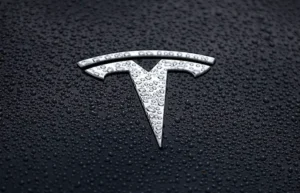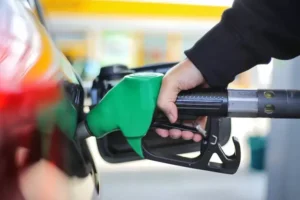California is officially joining the E15 club. Starting this year, gas stations across the state can sell fuel with up to 15% ethanol — something long restricted under the state’s unique environmental standards.

It’s a quiet policy shift that could have loud effects. From pump prices to air quality, the rollout of E15 is sparking fresh debate about how Californians power their cars — and how much it will cost them to do so.
What Exactly Is E15?
E15 is gasoline blended with 15% ethanol, a renewable fuel typically made from corn.
Most drivers today fill up with E10 (10% ethanol), but E15 contains a bit more of the biofuel that federal regulators say helps cut carbon emissions and reduce reliance on imported oil.
The Environmental Protection Agency (EPA) has encouraged its use nationwide for more than a decade. Yet California — home to the nation’s toughest clean-air laws — held back, concerned about whether E15 met its stricter “CARB gasoline” requirements.
Now, after years of testing, regulators say E15 can be safely used in California’s fuel system without increasing emissions or harming engines.
Will It Make Gas Cheaper?
That’s the big question for drivers already paying the nation’s highest gas prices.
The short answer: maybe — but don’t expect overnight savings.
Ethanol is cheaper to produce than refined gasoline, so blending more of it could slightly reduce costs. National studies suggest E15 could shave 5 to 10 cents per gallon off the retail price compared to E10.
But California’s fuel market is notoriously complicated.
Prices are shaped by refinery maintenance, transportation costs, carbon fees, and state taxes — all of which can easily overshadow ethanol’s modest discount.
Still, in a state where average gas prices hover above $5 per gallon, even a few cents could matter.
Can Every Car Use E15?
Not quite.
The EPA approves E15 only for cars, SUVs, and light trucks built in 2001 or later — roughly 95% of vehicles on the road today.
Older cars, motorcycles, boats, and small engines (like lawnmowers) should stick to standard E10.
Automakers’ stances vary: Ford, GM, and Toyota support E15 in newer models, while others advise caution. California stations will be required to clearly label pumps, giving drivers the final choice.
The Environmental Side
For California, E15 fits neatly into its push toward cleaner energy.
Because ethanol is plant-based, it can reduce greenhouse gas emissions by 6–10% compared to conventional gasoline.
However, the debate isn’t over. Environmental groups warn that corn ethanol production demands large amounts of water, fertilizer, and farmland — potentially offsetting its benefits.
State officials stress that E15 should be just one piece of a larger plan that includes sustainable farming and next-generation biofuels made from waste, not food crops.
How Gas Stations Are Preparing
Switching to E15 isn’t as simple as flipping a switch.
While most storage tanks and pumps can already handle the new blend, stations must update labels and sometimes retrofit equipment.
To encourage early adoption, the California Energy Commission is offering grants and technical support, especially for rural areas near ethanol producers.
Major fuel brands like Chevron, Shell, and Costco are exploring pilot programs, but experts say widespread availability won’t come until late 2025.
A Bridge, Not a Revolution
E15 isn’t meant to replace California’s long-term clean energy goals.
Instead, it’s a bridge technology — a way to cut emissions from existing cars while electric vehicles continue their rise.
California has more than 30 million registered vehicles, and even with the EV boom, most still rely on gasoline. E15 gives those drivers a slightly cleaner option today while the state builds out its electric future.
As one analyst put it, “E15 won’t transform the market — but it makes every gallon a little greener.”
What Drivers Think
Public opinion is cautiously optimistic.
A recent poll by the California Drivers Association found 58% of respondents would try E15 if it were cheaper, while 27% said they’d wait for more data on long-term performance.
Many see it as a welcome experiment — a small but meaningful change in a state always looking for cleaner, smarter ways to move.
What Comes Next
E15’s rollout will be gradual.
Retailers need time to adapt, regulators will keep monitoring emissions, and automakers must update warranties and guidance.
But the shift is real. For the first time, California’s fuel policy aligns with the federal ethanol program — a rare moment of consensus in the nation’s most environmentally complex state.
If E15 delivers on its promise of lower prices, cleaner air, and compatibility with modern cars, it could quietly reshape how Californians think about gasoline.
California’s move to E15 isn’t about a dramatic drop in gas prices — it’s about progress through pragmatism.
It’s a step that blends environmental ideals with everyday economics.
Drivers may not notice huge savings at the pump right away, but they’ll be part of a slow, steady shift toward a cleaner, more flexible energy future.
E15 may just be fuel — but in California, even fuel can spark change.


















